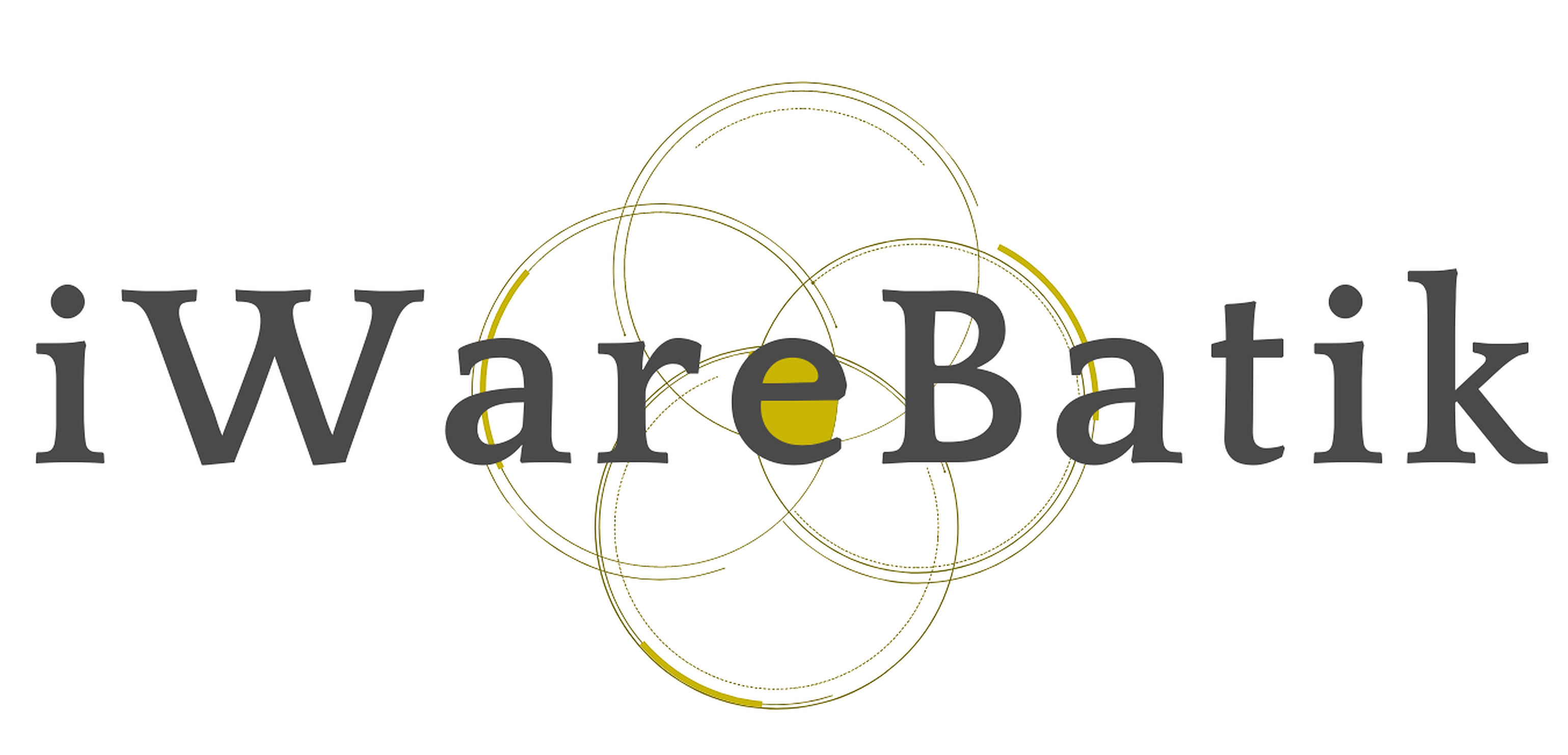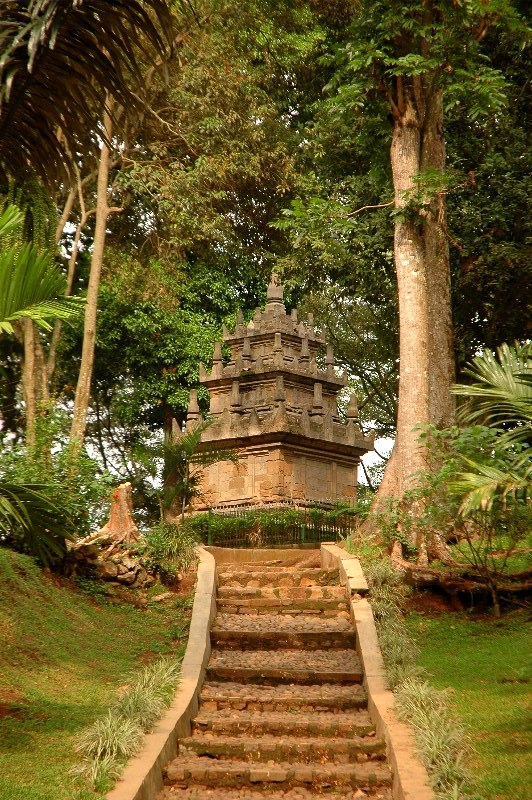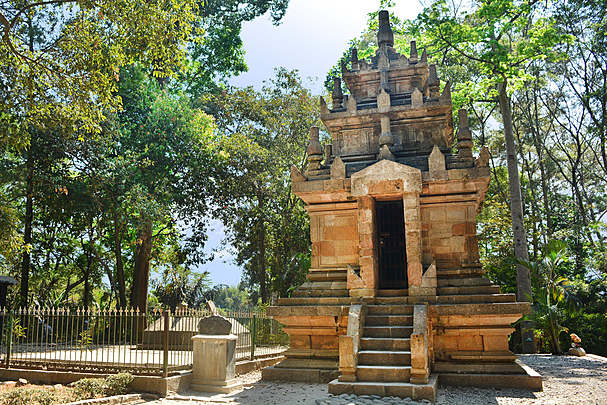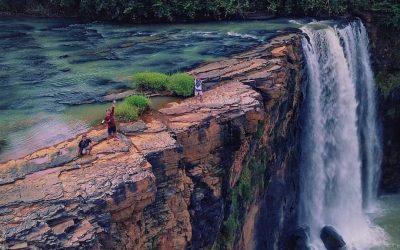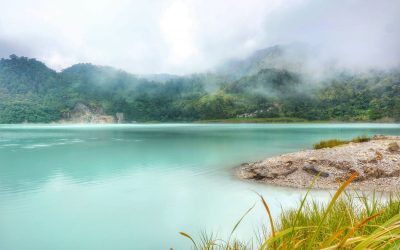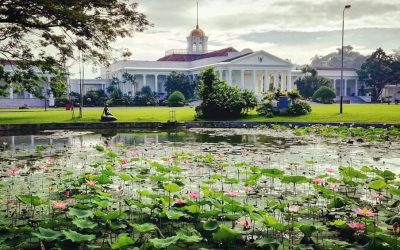Home / Batik Regions – Western Indonesia – Java Island – West Java / Cangkuang Temple
Cultural Destination
Embrace the spirit of the place!
Cangkuang Temple
Cangkuang Temple
Located in Leuwigoong village, this temple is the only one Hindu temple in West Java. Oddly enough, not many people know this fact. This unique temple is located on a small isle located in the middle of Cangkuang Lake, Garut Regency.
Tourist Attractions in West Java
Ciletuh UNESCO Global Geopark
If you want to enjoy one of the wonders of natural beauty in the world, Banten province has
Telaga Bodas Crater Lake
Have you ever thought about having a bath in a crater while enjoying the stunning view?
Bogor Botanical Garden
Bogor Botanical Garden is the perfect place to admire botanical gardens of all types, such as
West Java
Batik Motifs
Discover
Indonesian
Batik
Motifs
Taiganja
Taiganja is a precious gold pendant that shows the social status of the Kaili family. It is
Pinawetengan
The Pinawetengan Batik pattern was taken from a prehistoric inscription in
Tikar Natuna
The Tikar Natuna motif is adapted from the traditional making of pandanus mats in
Tangerang Herang
Tangerang Herang motif is a symbol of Tangerang city. The Tangerang Herang batik motif consists of
Pala Salawaku
This motif illustrates the unique weapons of the Maluku region, namely
Leuit Sijimat
This motif reflects the daily activities of the Baduy tribe in Banten. The main ornaments of batik motif consist of:
Karawo Pinang
Pinang refers to the Palm areca tree. This motif is considered as the original
Pucuk Rebung Riau
Pucuk Rebung symbolizes heart determination in achieving goals, good luck, and
Ikan tambal
The word “Ikan” refers to fish. The philosophical meaning of Ikan Tambal means is
Daun Simpor
This motif is inspired by the Simpor plant (Dillenia Suffruticosa) which is a typical
Tengkawang Ampiek
With its many advantages, the Dayaks use this leaf in ritual ceremonies. This plant is a symbol of
Enggang Dayak
Local people beliefs that hornbills are an incarnation of the Commander of the Birds. It has supernatural
Lok Baintan Floating Market
As you can imagine, the most authentic thing is that you can buy things and even
Ukir Sentani
The Ukir motif is a batik motif that is inspired by various traditional Sentani wood carvings
Desa Na Tolu
The Desa Na Tolu characteristic pattern symbolizes the Batak philosophy of existence and
Ake Patra
Ake is related to the divinity and the composition of the universe. It is a symbol of
Tifa Totobuang
The batik motifs illustrate Maluku’s traditional music instrument called
Pati-Pati Pinehiku
It symbolizes the hierarchy in society and the social status of the Mekongga
Pattimura
Pattimura is the name of an Indonesian hero who fought against colonialism in
Tongkonan
Toraja’s traditional house is called Tongkonan. Tongkonan is a place for
Singayaksa
The Singayaksa motif comes from the name of a place where Sultan Hasanuddin used to
Sero Tangga
The Sero Tangga illustrates an endearing feeling and sacrifices of a person to fulfil
Karawo Mahkuta
Mahkuta refers to Gorontalo’s traditional crown. It represents noble characters of
Cengkeh
The clove flower motif is the main commodity of the Tolitoli Regency. This motif represents
Kaganga Tanah Rejang
If Batik Besurek combines Arabic calligraphy motifs, then the Kaganga batik takes
Kasih Tak Sampai
‘Kasih Tak Sampai’ is an idiom in the Indonesian language which refers to
Pohon Hayat (Tree of Life)
The Batik motifs in Lampung are dominated by the acculturation of Buddhist and
Gentala Arasy
Built as high as 80 meters, the tower also highlights the historical side of
Sekar Jati
Sekar means flower and Jati refers to teak trees that symbolizes a strong mental character that
Raja Ampat
Raja Ampat motif represents the marine life at Raja Ampat archipelago in
Lontara
The Lontara script itself is a typical ancient script of Bugis and Makassar communities. History records that
Besurek Rembulan
This batik illustrates praise for God who created the wonderful universe
Srimanganti
The name of the Srimanganti motif is derived from Palace’s hallway that connects to
Awan Berarak
Awan Berarak is a combination of Dayak motifs and Malay patterns. The word ‘Awan Berarak’ means the
Parang Rusak
Another meaning behind this motif is an unconquerable spirit, symbolized by
Teguh Bersatu
This batik motif shows the strength of the people of Kupang. It also represents a sense of
Manguni Minahasa
Manguni is identified as the symbol of the Minahasa people. Manguni is known as a
Honai
The Honai is inspired by the traditional house of the Papuan community living in
Bintik Tujuh
The Bintik Tujuh (Seven Dots) motif has 7 white spots and green color gradation as
Wakatobi
It symbolizes the coastal beauty of the Wakatobi island and the symbol of Patra symbolizes
Rangkiang
The word “Rangkiang” refers to the rice granary in the Minangkabau language. It symbolizes
Dayak Kamang
Kamang motif is generally found in the Dayak tribe shield because it is believed to
Jumputan Bintang
The word Jumputan means the tie-dye technique, while the word “Bintang” refers to
Tanah Liek
The word “Tanah Liek” refers to clay in Minang language. It is also known as
Kuda Kupang
Horses symbolize wealth. It contains noble values of virtuous characters that bring
Burung Bidadari
Bidadari birds are endemic birds in Halmahera. This motif represents an
Kaharingan
The Kaharingan or ‘tree of life’ based on the Dayak tribes’ belief system. This tree symbolizes
Malinau Cultural Festival
You will witness a unique competition that might not be found other than in
Tabir Tanjung
Tanjung flower is a type of Cherry tree flower, which is commonly found in
Hiu Taliyasan
Indonesia is also home to the world’s largest fish, the whale shark (Rhincodon typus). Hiu Taliyasan refers to
Buketan Bali
The Balinese bouquet (Buketan Bali) is a floral arrangement and the name is
Dayak Taghol
Dayak Taghol has a distinctive style of four curved lines and small dots. This motif represents
Gurdo Solo
Gurdo or garuda bird is the mount of the Indian god Vishnu. As the Sun Bird,
Gedhog Kembang Waluh
a combination of Javanese cultural motif of the Majapahit kingdom (XII-XIV century) with
Parang Seling
Parang Seling or “alternating daggers” is a royal batik motif. It is a feminine variant of
Bekantan Pakis
This motif represents Pakis Haji (Polystichum setiferum), an endemic plant in
Durian Pecah
Broken Durian motifs depict the foundation of faith. The second half signifies the mastery of
Gonggong Siput
Gonggong (Strombus Turturella) is one type of sea snail found around
Kawung
The Kawung motif was created by Sultan Agung Hanyokrokusumo (1593 – 1645) as a symbolic gift for
Daun Lada Hitam
The black pepper motif represents the main commodity of Bangka Belitung
Sido Mulyo
Sidomulyo is one of the classical motifs, which is specifically used for the bride’s costume in
Gigi Haruan Lidi
The Gigi Haruan Lidi motif is taken from the name of the cork fish and is a symbol of
Bale Lumbu
This motif signifies the welfare of the ancient Sasak society. Bale also symbolizes the
Gamolan
This motif illustrates Gamolan, a bamboo musical instrument of Lampung that is
Jupri Kembang Teh
Kembang Teh illustrates the tendrils of tea plants that grow in the highlands of
Merak Ngeram
The hatching peacock motif has a very deep meaning which refers to the sacrifice and
Rumah Mamuju
the Batik motif illustrates the house of Mamuju King with the stairs, located on the left of the wooden stage house
Daun Sirih
This motif illustrates betel leaves that are used by Lombok communities as traditional
Gonggong Beruntun
This motif illustrates that a person should maintain a positive attitude and
Bultiya
The word ‘Bultiya’ is an acronym of the three major tribes in North Kalimantan, namely
Gajah Way Kambas
The motif illustrates the Lampung’s natural reserve, the Way Kambas. it also symbolizes
Gorga Simeol-Meol
The Gorga Simeol-meol is a pattern of plant tendrils. it is regarded as a symbol of longevity and
Tenun Bima
The motifs are adopted from Bima woven textile. This pattern has received a great
